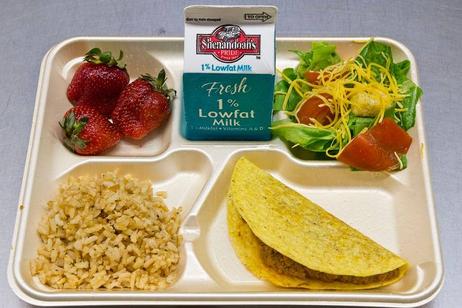As E.coli outbreaks grow with regularity, public schools are being scrutinized for their lunches. According to Associated Press reports released in early November, the leader of the House Education and Labor Committee is investigating the health and safety of public school lunches.
After California’s representative, George Miller, brought attention to a deadly outbreak of E. coli that resulted in two deaths and dozens of reported illnesses, the government is working to ensure that school meals are protected from these dangers. Although there were no reported schools specifically impacted by the recent E. coli outbreak, Miller believes that the Government Accountability Office should take responsibility for ensuring that schools are not purchasing their meats and produce from contaminated facilities.
Are School Lunches Safe for Consumption?
In examining many political leaders’ demands for increased food safety measures in public schools, the Associated Press further reports that “Federal authorities had failed to tell schools about recalls of potentially tainted peanut products and canned vegetables, and cafeterias may have unknowingly served them to children.” Expanding on this concern, the Government Accountability Office also discovered that the U.S. Agriculture Department was inconsistent with its efforts in contacting schools about distributed food recalls.
While students from all socioeconomic backgrounds commonly purchase school lunches, an estimated 30 million students depend upon federally funded lunch and breakfast programs from school cafeterias as their only source of nutrition and sustenance. This fact alone has prompted community leaders to express their outrage over the lack of recall oversight.
In addition, experts assert that young children are the most susceptible to E. coli-related illnesses; as such, schools should specifically enact measures to protect their students from food-borne diseases.
The Dangers of E. Coli
Known to mutate into various strands, E. coli bacteria can create serious symptoms, including cramps, diarrhea, bloody stools, and/or vomiting. While infections can last anywhere from a few days to weeks, serious cases can even result in death.
Although many individuals assume that E. coli can only be found in meats and dairy products, in reality, these bacteria can thrive in nearly any environment that serves as a hospitable habitat. In fact, while reports of E. coli have been linked to tainted ground beef, “Recent outbreaks also involved prepackaged cookie dough and fresh spinach.”
Preventing E. coli History from Repeating Itself
Proponents of the public school food inspections hope that the measures will keep history from repeating itself on campuses across the country.
According to the Marler Clark Law Firm, which specializes in representing food poisoning victims, Washington Public School students were hit by a powerful E. coli breakout in October of 2001. Most notably, several cases of infection were reported among students attending Washington’s Finley Elementary School. Upon investigating the Finley cafeteria and food samples, investigators uncovered ground beef that appeared to be suspiciously unsound, as large portions of the meat were undercooked and raw.
Representative for some of the children who were struck with the detrimental infections of E. coli, Marler Clark convinced a jury to help compensate the children for their potentially fatal contractions of the bacteria. According to court records, the 11 children involved in the case were endowed with a total of $4.6 million for their endangerment and illnesses.
As another shocking example, between 2006 and 2008, more than 143,282,823 pounds of frozen beef produced by Hallmark/Westland Meat Packing Company were recalled due to E. coli, salmonella, and mad cow disease concerns – although a majority of this meat had already been distributed and consumed. According to Associated Content, this was the same meat that was distributed through food lunch programs to public school students.
To prevent situations seen at the Finley Elementary School from occurring again, today’s government leaders hope that recall procedures and pre-distribution evaluations will be strictly enforced. In addition, better controls throughout the entire meat packaging and distribution process will hopefully decrease the risks of E. coli presented to our children. According to the New York Times, Senator Kirsten Gillibrand from New York has proposed the E. Coli Eradication Act of 2009, which would mandate that both the slaughterhouses and grinding facilities test meat trimmings for E. coli, instead of the simple spot checks that today’s slaughterhouses employ.
Hopefully, with a renewed focus on preventing E. coli from reaching cafeterias, our children can eat public school lunches with peace of mind – aside from the non-healthy choices that prevail throughout cafeterias, that is.












